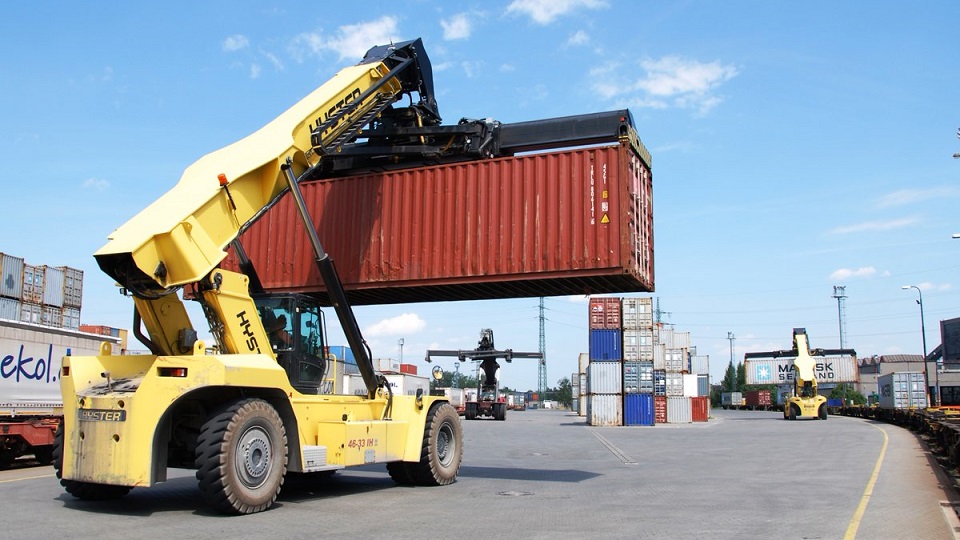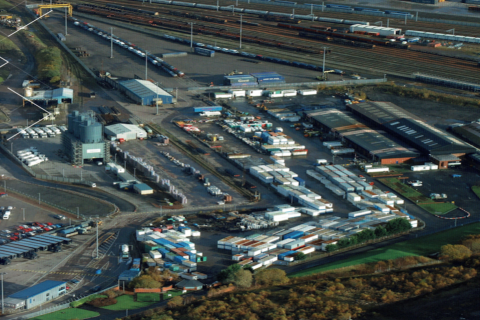Rise of intermodal services in Hungary shows the way

According to the Association of Hungarian Logistics Service Centres (MLSZKSZ), the freight market of the country is bound to experience changes after the pandemic’s impact during 2020. Hungary’s freight transportation relied mainly on road and truck services. Rail freight was also used but not to a great extend. Currently, there is a new trend emerging, that of intermodal transportation.
During the first nine months of the year, road transportation in Hungary dropped significantly. Simultaneously, railway services saw an increase of approximately 7,5 per cent. Together with rail freight, the need for intermodal transport rose too. The way that COVID-19 influenced the conveyance of goods around the world seems to have highlighted a rising tendency towards efficiency. Consequently, Hungary could not avoid considering the benefits that intermodal trade offers, after seeing its road transport sector nearly collapsing.
Turnover
As mentioned previously, the road sector used to constitute Hungary’s main driver in terms of transportation. The situation changed in 2020 when the industry saw road traffic decreasing by 28,1 per cent and transported volumes by 33,3 per cent. Besides, inland transport distances receded to 157 kilometres, while the rate of empty rides rose to 24 per cent. Compared to the numbers of 2019, these insights indicate the shocking strike in which road transport was submitted.
However, the situation looked ominous beforehand. Transferring products with trucks might be considered the most traditional and also cost-efficient solution by many. Especially in countries where the railway is underdeveloped, this makes perfect sense. The rising criticism concerning the environmental impact of congested roads has set lately another burden on the operation of road freight services. Environmental regulations posed by “West-European countries”, says MLSZKSZ, combined with the administrative and added costs that the Mobility Package induced are also representing a great challenge.
Prices lower than average
Furthermore, foreign market players which offer transportation solutions at prices lower than average, are also causing problems with regards to the competitiveness of the sector. As if all these weren’t enough, MLSZKSZ reports that there is also a lack of truck drivers who can undertake international services. The observed scarcity is not estimated to change in the future. In contrast, it might intensify even more.
Reasonably, and based on facts, the transportation status quo in Hungary is going to get extensively altered. The proclivity to move away from road freight seems like a development, not necessarily forced, but implemented naturally due to the evolution of the market. However, how can this transition take place in practice?
Air and water
Water and air freight transportation during 2020 did not experience significant changes in Hungary. Specifically, water transportation experienced some fallbacks -15,3 per cent in volumes and 7,2 per cent in traffic- but mainly due to the low water levels that the Danube presented.
On the other side, air freight surprisingly remained at the same levels as other years and saw a decrease of only 3,3 per cent in cargo volumes. Subsequently, the lack of significant shifts in these two modes indicates that they do not possess a very central role in the country’s transport scene. They certainly are stable factors, but they will not acquire the position that road transport used to have.
Railway
Similarly to other countries, rail freight transportation in Hungary experienced a slight decrease in the early months of the pandemic but in overall its numbers rose by 7,5 per cent. Demand regarding rail services increased substantially while traffic volumes also got boosted. Moreover, the markets which rail attracted more were these of household equipment and food products.
Rail might not seem able to carry out the number of services that trucks used to do in the past. Nevertheless, the fact that it successfully managed the increased volumes during the previous months might show that it could at least take the lead for an alternative solution.
Intermodality
The most significant increase was observed in the intermodal sector of the country. Maybe not in terms of numbers, since the Hungarian intermodal market saw a rise of almost 2 per cent, but in terms of acquiring efficiency and speed in transportation. To meet the advanced needs for household items and food products, the Hungarian transport sector had to put craneable semi-trailers and 45-foot containers on the rails. This move was also encouraged by the freeing of cargo capacities in combined transport of goods.
In practice, intermodal transportation can cover long distances in less time than a single mode of transport. Additionally, it constitutes a more environmentally friendly option. Hungary was probably not planning to make a shift towards this direction. However, a combination of factors led the country to reconsider the situation and discover in practice that becoming intermodal is the most viable solution, not only for now but also for the future.
New initiatives
Taking into consideration the current circumstances, MLSZKSZ decided to set up a working group that will undertake the logistic organisation for combi terminals and intermodal transport in the country. The association estimates that intermodality is going to be the sovereign trend for years to come on a national and international level.
Europe is already moving towards this direction with great success so far. Nonetheless, seeing countries such as Hungary adopting similar services constitutes a positive sign for the future. Choosing and investing in intermodal transport benefits the environment, the efficiency of services and ultimately, the economy. Additionally, it benefits the development of rail freight, which can potentially become the backbone of international trade through concepts like this of combined transport.
You just read one of our premium articles free of charge
Want full access? Take advantage of our exclusive offer




